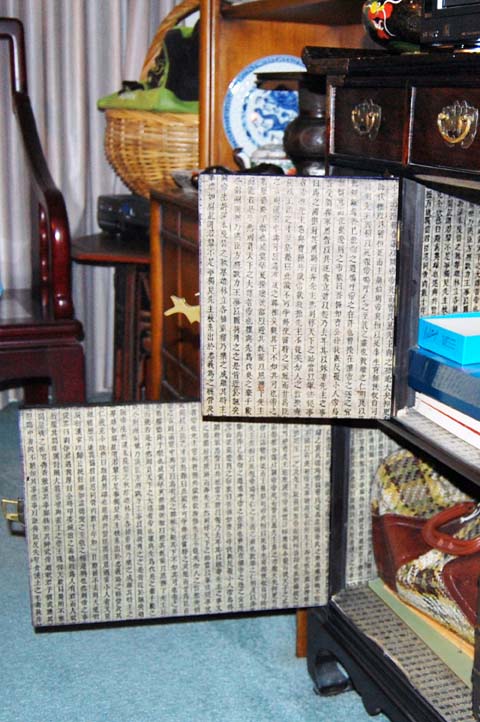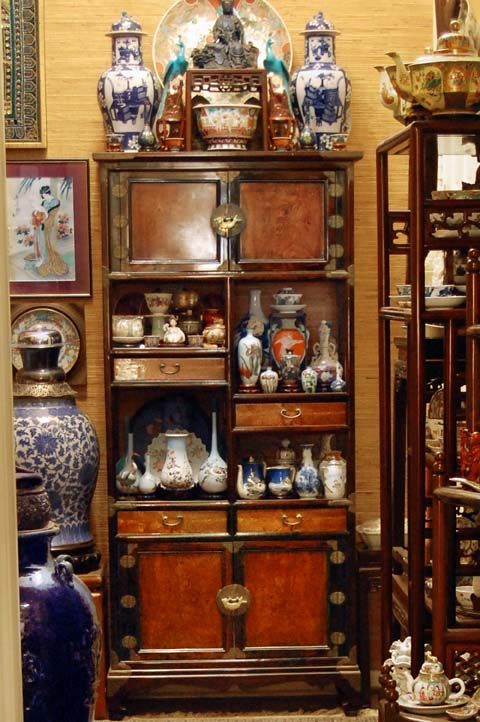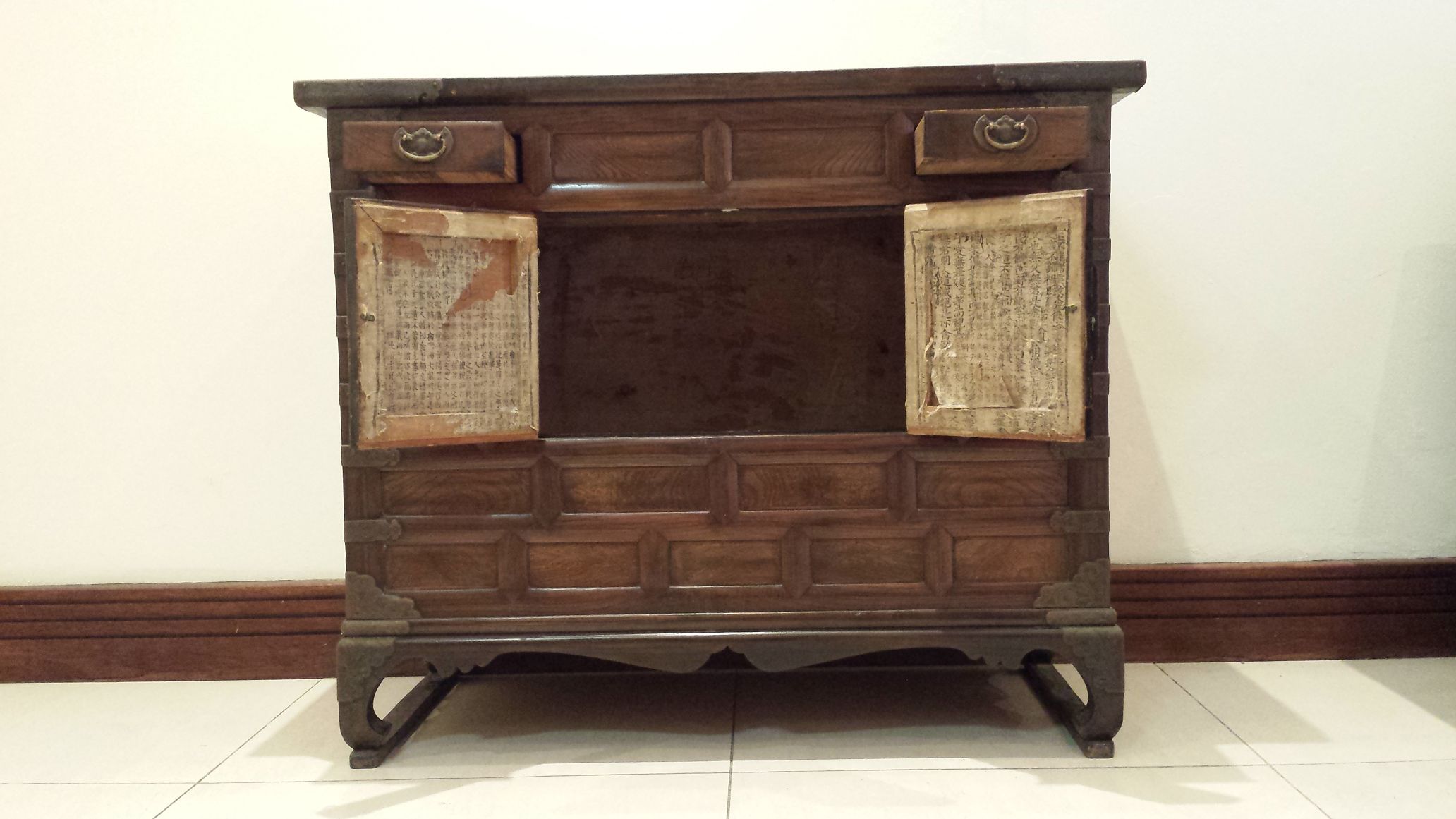
|
Subject:Re: Korean Writing on Cabinet
Posted By: Bill H Wed, Oct 08, 2014
There's no doubt in my mind that the writing and cabinet are both Korean. I believe it is traditional for Korean cabinetmakers to line the inside of products like yours with newspapers, or at least that's what I gathered when discussing with friends in Seoul where to go in the city to buy three Korean chests of my own on a visit there about 30 years ago. They sent me to the Itaewon district, and I can vouch that my choices look pretty much like yours on the inside, though the newspaper in mine is in a bit better shape. The maker made no effort to convince me that the varnished pieces I bought were antique. Your cabinet, on the other hand, looks like it once had a traditional oiled finish, so may be older, but that's a call for someone with more experience than I possess in the field.
I've attached pictures here of a couple of my Korean pieces, an étagère and the interior of a chest with drawers and other spaces with locking doors.
Best regards,
Bill H.


|
 Korean Writing on Cabinet
Korean Writing on Cabinet  ( China & Japan ) - Sean - Oct 08, 2014 (02:03 AM)
( China & Japan ) - Sean - Oct 08, 2014 (02:03 AM)  Re: Korean Writing on Cabinet
Re: Korean Writing on Cabinet  - Bill H - Oct 08, 2014 (04:48 AM)
- Bill H - Oct 08, 2014 (04:48 AM)  Re: Korean Writing on Cabinet - Sean - Oct 09, 2014 (12:37 AM)
Re: Korean Writing on Cabinet - Sean - Oct 09, 2014 (12:37 AM)  Re: Korean Writing on Cabinet - rat - Oct 08, 2014 (10:55 AM)
Re: Korean Writing on Cabinet - rat - Oct 08, 2014 (10:55 AM)  Re: Korean Writing on Cabinet - Super - Oct 08, 2014 (08:10 PM)
Re: Korean Writing on Cabinet - Super - Oct 08, 2014 (08:10 PM)  Not Chinese? - Super - Oct 11, 2014 (12:00 PM)
Not Chinese? - Super - Oct 11, 2014 (12:00 PM)  Re: Korean Writing on Cabinet - rat - Oct 08, 2014 (10:28 PM)
Re: Korean Writing on Cabinet - rat - Oct 08, 2014 (10:28 PM)  Re: Korean Writing on Cabinet - Bill H - Oct 09, 2014 (01:17 AM)
Re: Korean Writing on Cabinet - Bill H - Oct 09, 2014 (01:17 AM) 



